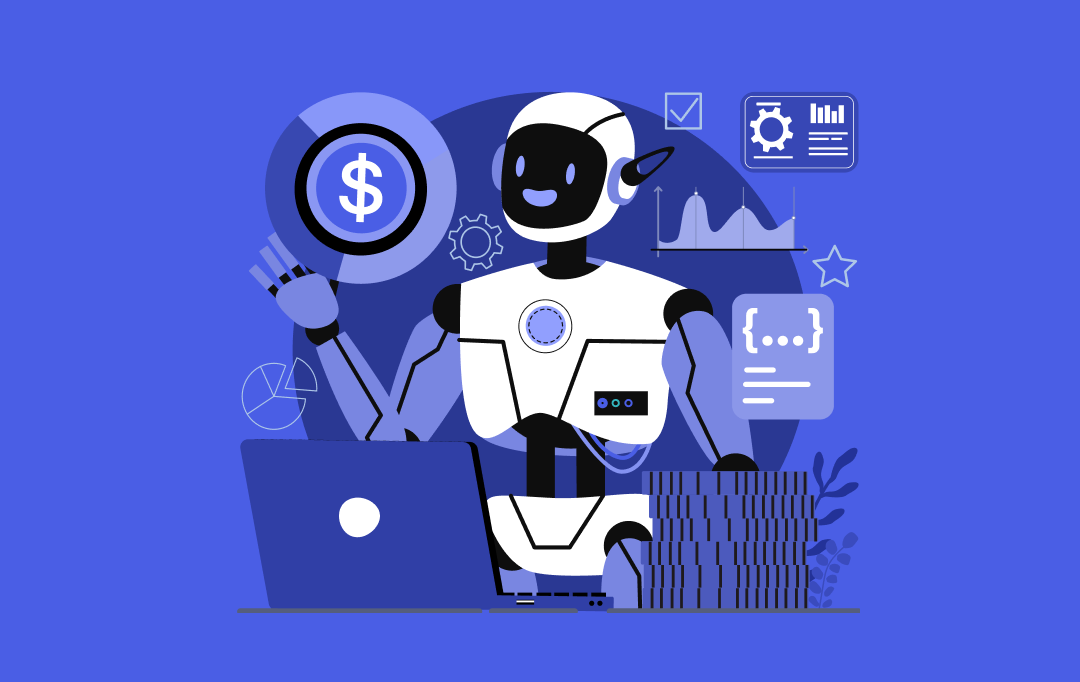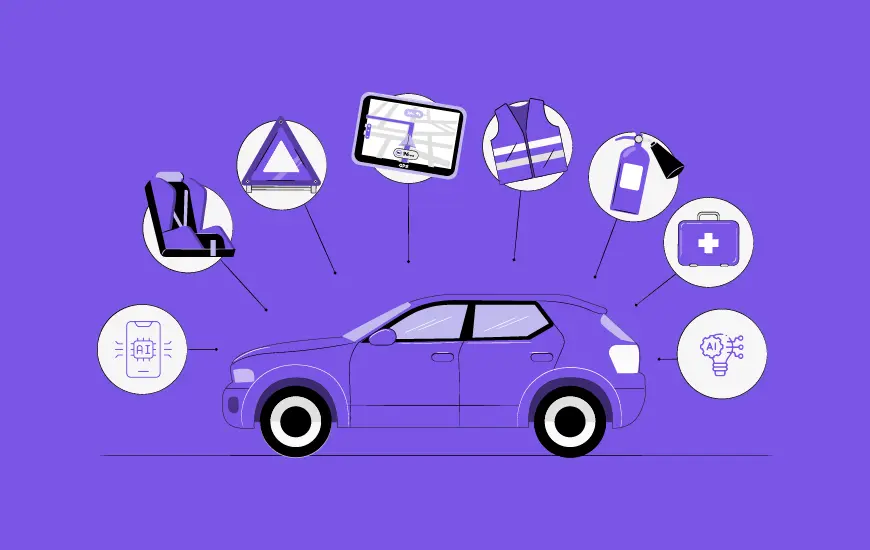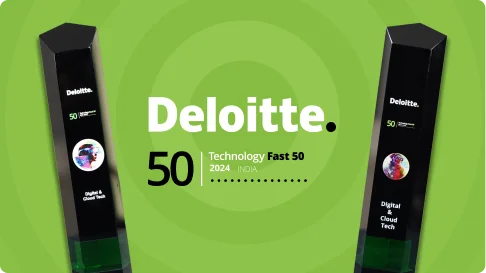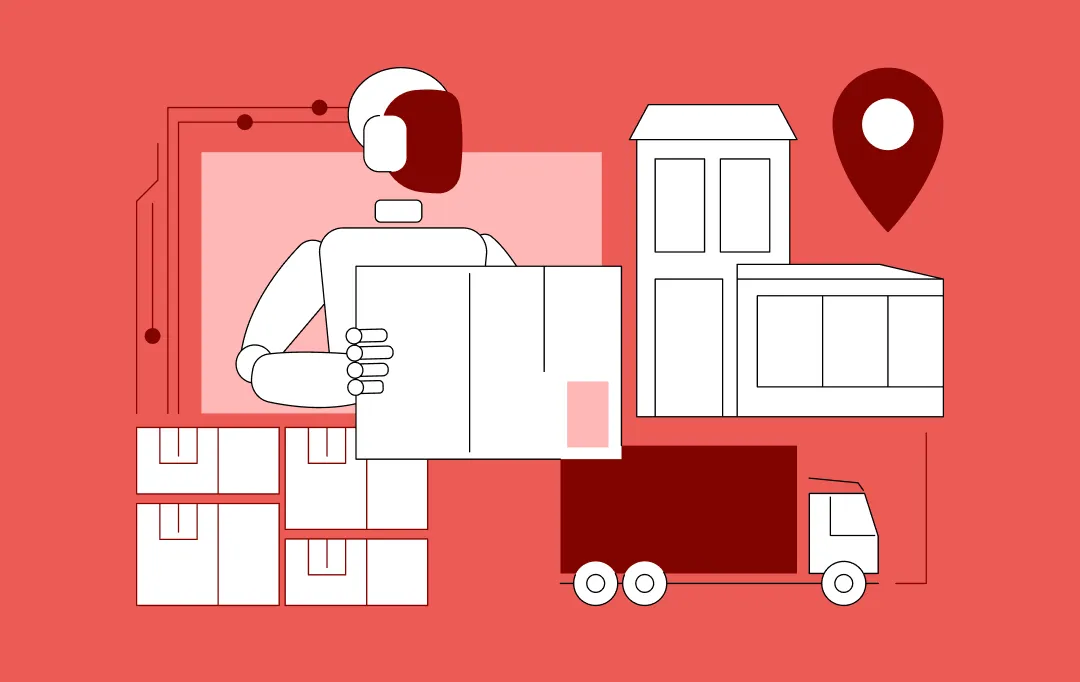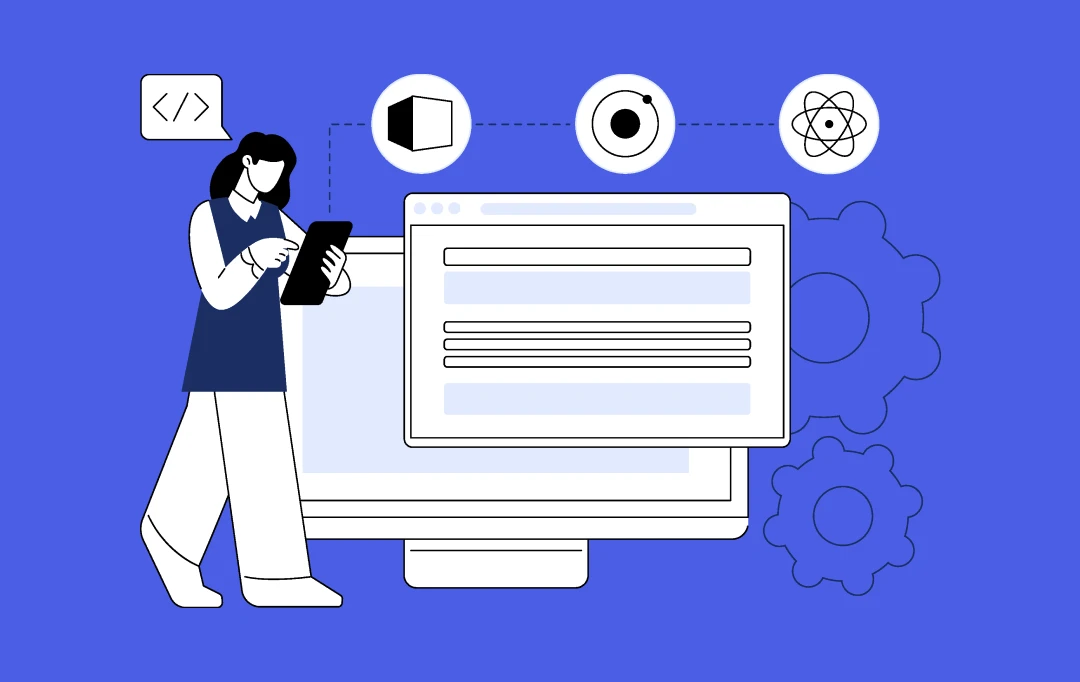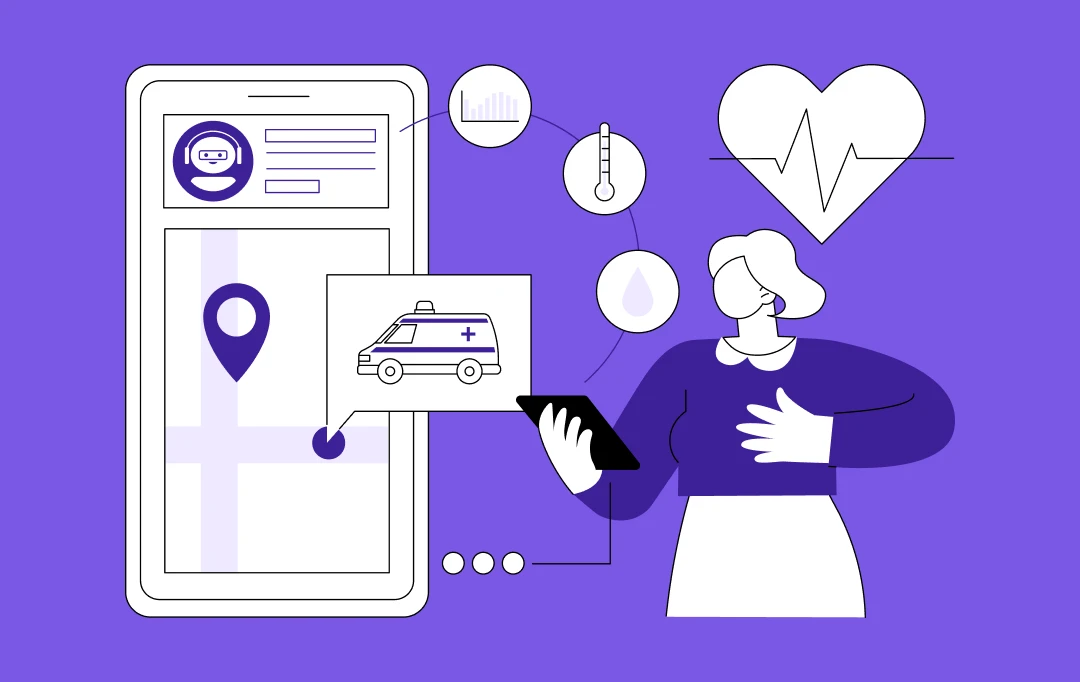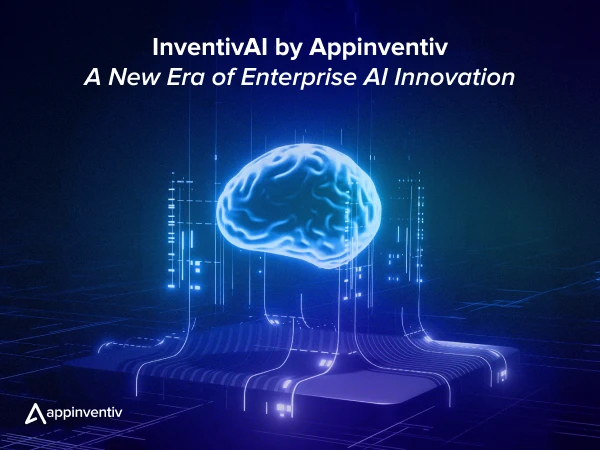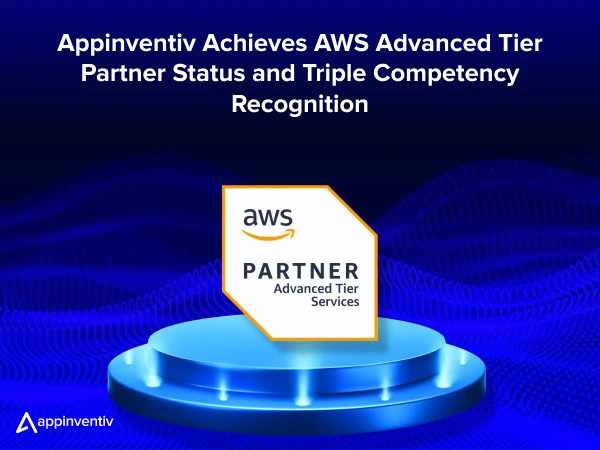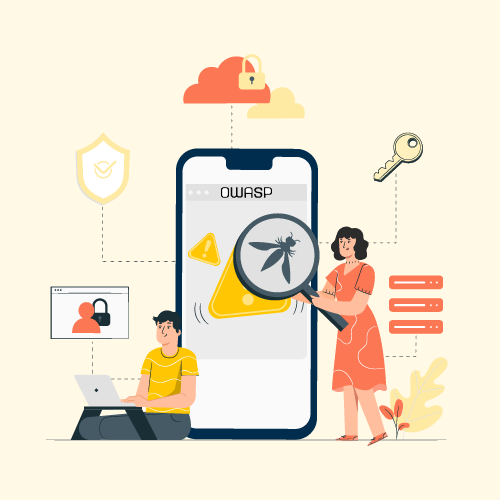- From Traditional Cable to OTT: Why Consumers Are Making the Switch
- Content Diversification
- Portability & Cost-Effectiveness
- Control & Personalization
- Market Trends on OTT Platform Development
- What Types of OTT Services Are Presently Active in the Market?
- OTT App Development Cost: How Feature Inclusion Affects Pricing
- Cost Analysis Based on App Complexity
- Cost Analysis Based on App Development Stages
- The Pre-Development Stage:
- OTT App UI/UX Costs
- Core Development Phase: Frontend + Backend
- Feature Development Phase
- Third-Party Integration and Quality Testing
- Post Launch Maintenance
- Quick Formula to Estimate The Cost To Make An OTT App?
- Factors Affecting an OTT App Development Cost
- UI/UX Design Complexity
- Backend Development
- Backend Technology Stacks
- Third-Party Integrations
- Security Compliance
- Platform Selection
- Advanced Technologies
- Feature Complexity
- Must-Have Features to Include In OTT Software and App Development
- Multilingual Content
- Watchlist
- Search
- User Profile
- Social Features
- Screen Mirroring
- In-App Purchases
- Payment Integration
- Monetization Strategies for OTT Apps and Platforms
- 1. SVOD
- 2. TVOD
- 3. AVOD
- OTT Software & App Development: Successful Steps to Follow
- Selecting A Niche
- Developing Content Inventory
- Choosing Your Business Model
- Creating Your Website
- Choosing the Right Tech Stack
- Get Your OTT App Developed
- What You Need To Know While Planning Your Budget For OTT App
- How Can Appinventiv Help You in OTT Platform Development Strategy
- FAQs
- Q. What are some challenges in OTT apps and platform development?
- Q. What are the considerations for compliance and regulation for OTT app development?
- Q. What are the tips and best practices to reduce OTT app development costs?
- Q. How long does it take for OTT app development?
- Q. How much does it cost to start a streaming service?
When was the last time you had to sit in front of your television and wait for your favorite show to broadcast?
You might not remember the waiting, as it’s been years since we binge-watch on OTT platforms. Over the past decade, the media and entertainment sector has undergone a digital revolution. The demand for quick streaming media has skyrocketed with the ability to adapt to all content. Now, the audience needs on-demand personalized content based on individual preference, which is why the OTT platforms are the decade’s biggest hit.
Consumer preferences, evolving technologies, and external factors such as the pandemic have given rise to the wave of OTT software and app development. Why?
Because the OTT (Over-the-top) platforms, such as Netflix, Amazon Web Series, Facebook, YouTube, HBO, Apple TV, and similar streaming services simplify the operational infrastructure and focus on the brand and storytelling. AI is already transforming OTT streaming platforms, enhancing their ability to captivate audiences and deliver personalized experiences. These AI-powered OTT streaming platforms have brought in unbelievable engagement to every household. Take a look:
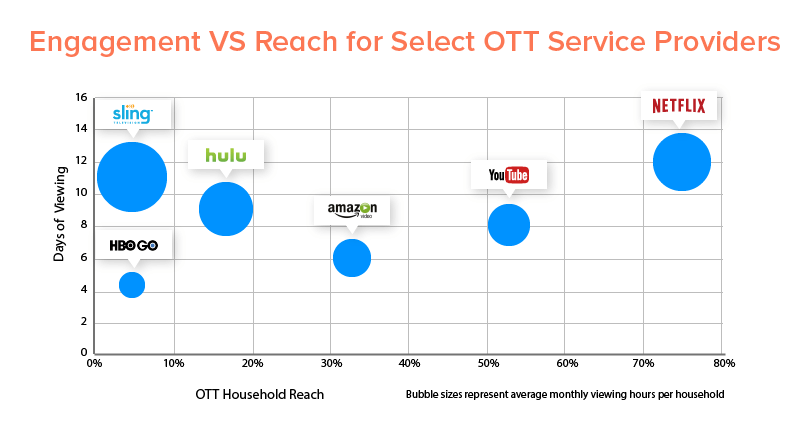
OTT revenues are expected to reach $934.39 billion between 2024 – 2029, with a 31.3% CAGR forecasted between 2024 to 2029. The OTT market has been diversifying itself across various content types, including video, text, and music streaming. The US market is a leader in the OTT market, with Europe, APAC, South America, and the MEA region following after. [Source: Globe Newswire]
If you are looking to make an OTT App, you must struggle around the question – How much does it cost to develop an OTT app?
The cost to build an OTT app ranges from $40,000 to $500,000 or more, additions like feature complexity, technology integration, design sophistication, and app development timeline are major cost contributors.
Therefore, if you are a business owner looking to invest in custom OTT platform development, this guide familiarizes you with everything you need to know, right from key features to development costs that should align your marketing strategy with modern on-demand trends.
From Traditional Cable to OTT: Why Consumers Are Making the Switch
Apart from the widespread availability of OTT services (a significant benefit), the greater shift from traditional Cable TV happened when OTT platforms changed how people consume entertainment and other media. While traditional TV programmes are more rigid in their timings and accessibility, OTT offers flexibility when the lives of most professionals work through tight time constraints. A ResearchGate publication revealed that such widespread OTT adoption resulted in a 4% drop in 2019 worldwide movie attendance, with a 4.6% decline in North America alone. Other contributing variables include:
Content Diversification
A diverse content library is a significant driver for OTT platforms. These platforms provide a vast and diversified curation of content that varies across multiple genres, languages, and formats. Moreover, the availability of regional dialects and niche category content is something that traditional cable TVs cannot replicate due to the different platform models they work on.
Portability & Cost-Effectiveness
With an active internet connection, OTT mobile apps and web platforms allow users to stream their content anywhere, anytime. This feature is further complemented by lower subscription costs, making it available at a higher scale and to a wider audience.
Control & Personalization
OTTs rely on their own curated algorithms and a suggestions engine to recommend shows and movies based on the user’s viewing history and ratings. Compared to traditional cable TVs, which offer little to no personalization and force users to scroll through random suggestions, OTTs win over cable TVs. With complete control over their viewing recommendations, OTTs win over cable TVs.
Other reasons include improved UI, HD Streaming, Device Compatibility, etc. No Hidden Fees in OTT platforms is also a comparative PLUS.
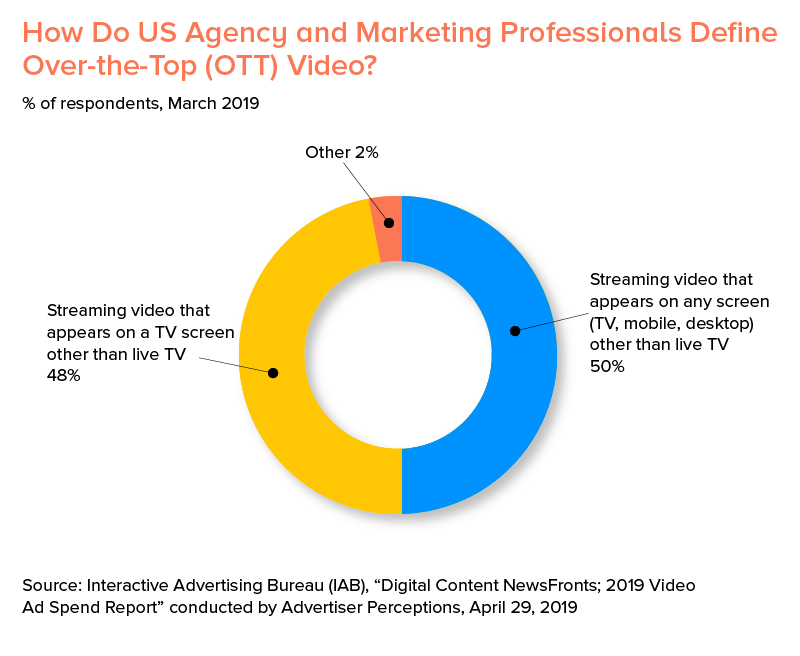
As you can see, over 50% of the companies are familiar with the whereabouts of OTT platform services. However, to get started, you would need more discreet research on the OTT app development market.
Market Trends on OTT Platform Development
The latest insights shared by MarketWatch revealed that Netflix aims to become a $1 trillion company, and some statistics prove that this is not a far-stretched aim. Data shows that Netflix’s stock has gained about 78% in the last 12 months. [Source: MarketWatch]
1. A Wall Street Journal article shared a strategic insight. The “more is better” approach adopted by Warner Bros. Discovery’s Max resulted in the addition of 20 million subscribers in 2024 and a 2025 projected EBITDA of $1.3 billion. It explains how quickly the OTT adoption rate is currently increasing. [Source: Wall Street Journal]
2. The 2025 Digital Media Trends report by Deloitte stated that consumers, mainly millennials and Gen Zs, are diversifying their media consumption by engaging through video service platforms and social media.
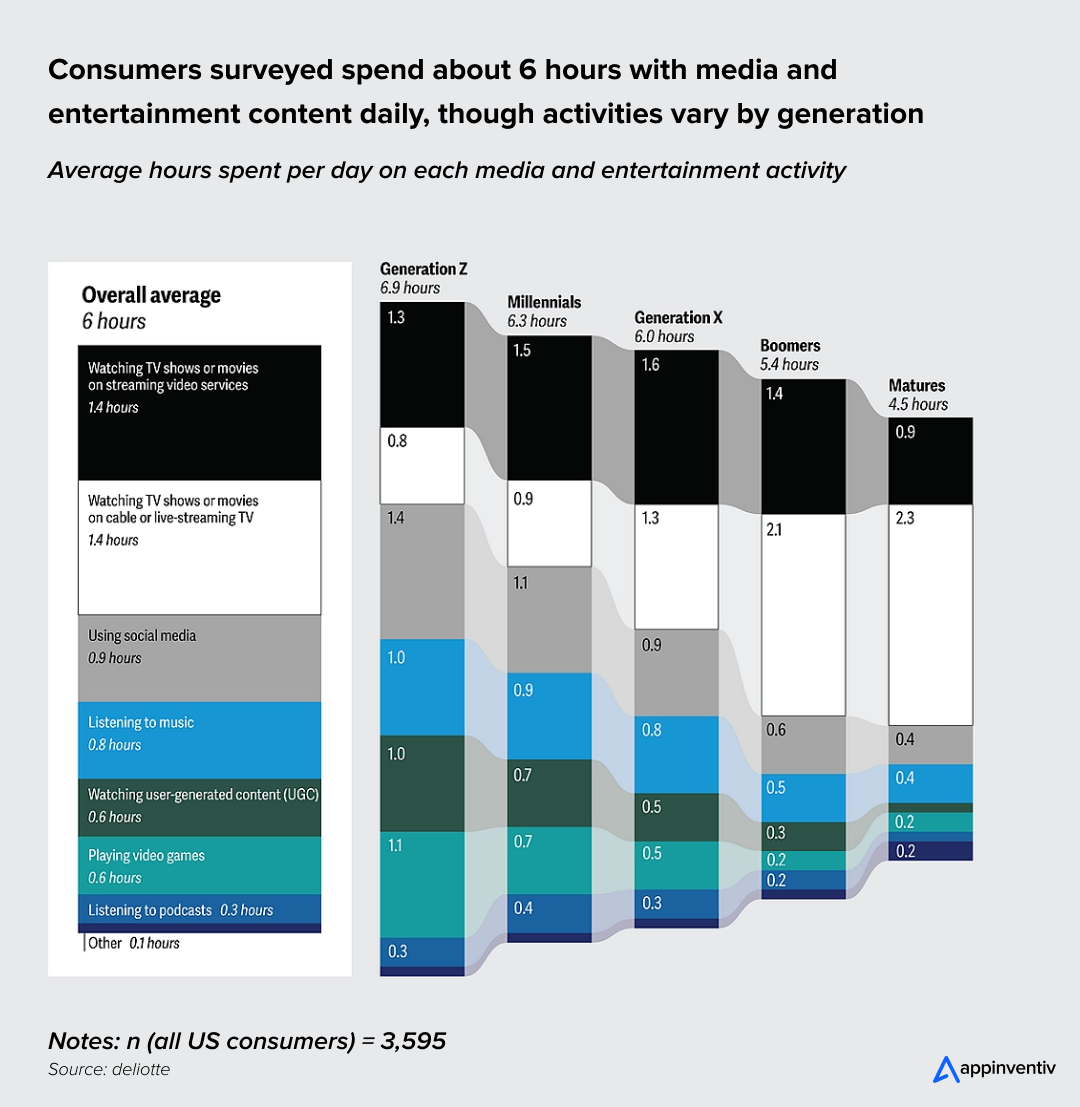
Content consumption combines SVOD (Streaming On-Demand Video), Social Media, Music, and Podcasts. [Source: Deloitte]
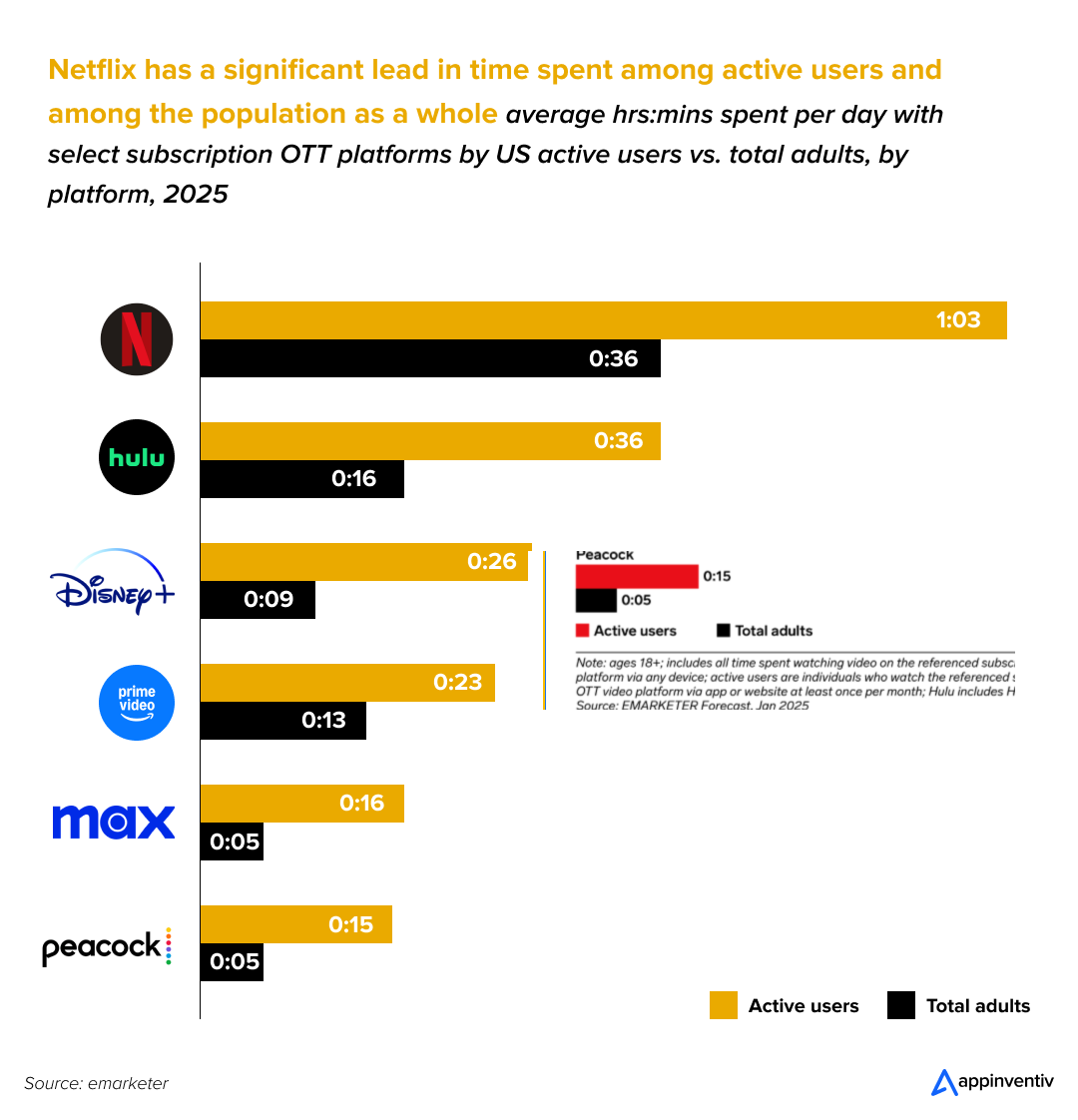
3. Netflix’s users are expected to spend more than an hour on the platform in 2025. This will make it the top platform among all major sub-OTT services and the leading one across every type of digital media we monitor. (Source: EMarketer)
You can get a sense of the extent of OTT software development with the statistics mentioned above. This also answers how Movie streaming apps are redefining the entertainment industry.
The OTT video streaming development share doesn’t end at these percentages. We will keep looking into graphs and statistics all throughout the article.
Now, let’s get to the active OTT service options available for you.
What Types of OTT Services Are Presently Active in the Market?
The OTT market growth is presently being charted, especially since the massive Netflix revolution, which is continuously evolving. However, OTT app development is not just restricted to video streaming services. Here are the current OTT development alternatives available in the market:
- Video
- Audio
- VOIP
- Messaging
Coming to the video streaming app development like Netflix, here are three major types of OTT app development services available in the market:
- Services-based OTT service
- OTT platform for content and communication
- OTT in form of devices
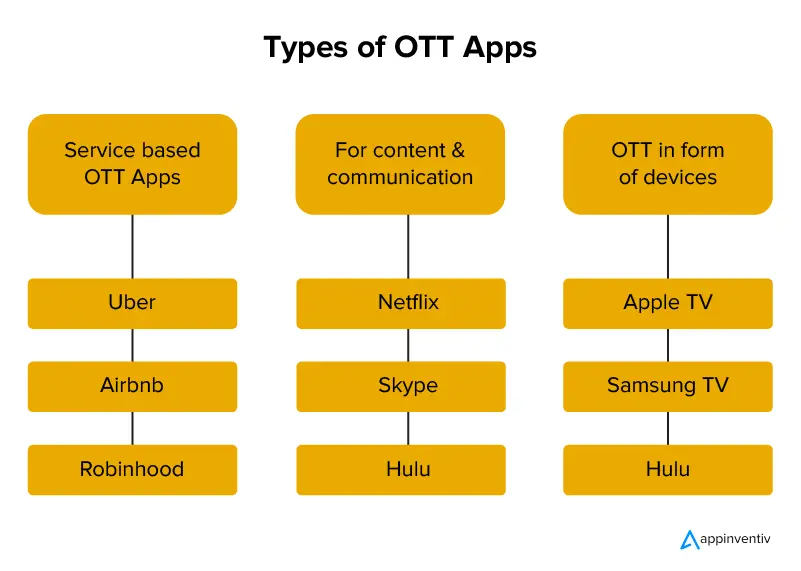 OTT App Development Cost: How Feature Inclusion Affects Pricing
OTT App Development Cost: How Feature Inclusion Affects Pricing
Considering OTT mobile app development cost and setting up a budget is a foundational step in the development process.
Though the usual cost ranges from $40,000 to $500,000 or more, additions like feature complexity, technology integration, design sophistication, and app development timeline are major cost contributors.
When considering custom OTT software development, building it from scratch proves to be highly rewarding as it gives you control over everything about the application. Using a white-label OTT solution can always be your first choice. While using available frameworks to build your OTT app seems easy and lucrative, it barely has any customizations that would be special in your app.
The best bet is to connect with a dedicated and experienced OTT App Development Company with hands-on experience in similar projects. This will severely reduce your development timeline extension, and you will get your product delivered within the estimated time frame.
Let us dive deeper into the details of OTT app and Platform development cost breakdown:
Cost Analysis Based on App Complexity
The complexity of an OTT app significantly influences its development cost. Below is a breakdown of OTT app development costs based on complexity:
| Complexity | Features Included | Cost Estimation |
|---|---|---|
| Simple OTT App | Video streaming, user authentication, basic content library, search functionality | $40,000 to $120,000 |
| Moderate OTT App | Simple features + personalized recommendations, offline downloads, multi-device sync, enhanced security | $120,000 to $250,000 |
| Complex OTT App | Moderate features + AI-driven personalization, live streaming, multi-language support, advanced analytics, multi-platform compatibility | $250,000 to $500,000+ |
Hence, the final cost depends on the project timeline and development approach adopted. Generally, the total OTT app development cost is measured based on this formula:
Cost Analysis Based on App Development Stages
Each phase of OTT app development involves specific tasks, contributing to the overall cost from ideation to post-launch maintenance.
| Stages of Development | Features Included | Cost Estimation |
|---|---|---|
| The Pre-Development Stage | Market research, competitor analysis, technical requirements | $15,000 – $30,000 |
| The Design Stage | UI/UX design, wireframing, prototyping | $25,000 – $60,000 |
| The Core Development Phase: Frontend + Backend | Coding, backend setup, integrations, testing | $100,000 – $250,000 |
| The Feature Development Phase | Basic + Advanced + AI features | $300,000 – $400,000 |
| The Launch Stage | App store deployment, marketing, user acquisition | $15,000 – $40,000 |
| Post-Maintenance | Updates, bug fixes, server management, customer support | $20,000 – $60,000/year |
The Pre-Development Stage:
This initial step outlines the foundation for your OTT app development. This phase includes OTT app developers and business stakeholders conducting market research to analyze trends and app functionalities that are killers in the market.
This phase also includes the documentation process, where the app’s core functionalities, features, user journey, content type, and monetization strategies are discussed. It also includes strategic decisions on the technology stack type and frameworks your OTT app would be based on.
OTT App UI/UX Costs
Thanks to Netflix and other OTT platforms, user preferences for OTT app designs have significantly changed over the years. Today, your OTT app’s subpar UI/UX design will not work due to high user expectations. The design should be visually intuitive across a range of devices. The prototyping phase is a part of this step as it allows stakeholders to further note the app’s user flow and functionality.
It is important as it provides a brief idea of the app’s journey, allows for identifying usability issues, and gathers feedback. Interactive design and user components are included in this step.
Core Development Phase: Frontend + Backend
This is the most crucial and cost-intensive phase of the OTT app development process. The frontend development includes frameworks like Swift, React Native for app development, Kotlin, etc. Though choosing a platform depends on individual business requirements, developers prefer cross-platform frameworks like React Native or Flutter app development because of a single codebase.
Backend development serves as a background engine that keeps the app running smoothly. It includes setting up a robust server and cloud infrastructure using GCP (Google Cloud Platform) or Azure. Elements like video storage, user authentication, and transcoding are handled in this development phase. Moreover, API integration and connectivity with third-party services, namely analytics tools, payment gateways, etc., are other key components of this phase cycle.
Feature Development Phase
The feature development phase focuses on building essential components that enhance user experience and platform engagement. Basic features like user registration and profile management are essential for OTT software development.
This simple profile feature is vital for customizing accounts, managing preferences, and viewing watch history. Similarly, content search and filtering are other functionalities that ensure users can easily find what they seek. It is incredibly useful for content-heavy platforms like OTT companies.
Moreover, including AI in the OTT app and platform development process has become important. With competition already integrating an AI engine to suggest recommended and suggested content, it has become highly important. Additional features like watchlist management and continue watching are optional enhancements that significantly improve the customer experience on the app.
Third-Party Integration and Quality Testing
This stage embeds important external services. Third-party integrations, such as streaming SDKs like Agora and Wowza (for smooth and scalable video streaming) or analytics tools like Firebase Analytics (for tracking user behavior), add powerful capabilities to the OTT app.
Though it further increases the custom OTT app development cost, it is a strategic investment that enhances the app’s functionality and user experience. Once third-party integration is completed, quality testing will be conducted in the foreground. This step involves app testing to the highest performance, security, and usability standards. It typically includes manual and automated testing, cross-browser testing, etc.
Post Launch Maintenance
Like the development process, post-launch app maintenance is a highly important step. This process includes compliance checks, metadata preparation, security guidelines, fraud detection, etc. Over time, this step becomes a recurring expense in the overall OTT platform development cost. This preventive maintenance covers security patches, server monitoring, and minor and major bug fixes.
The cost estimations for post-launch maintenance typically revolve around $20,000, making it a vital investment in smooth app functioning and scalability with user growth. Thus, in a nutshell, custom OTT app development costs cannot be outwardly calculated but are a combination of multiple smaller steps combined in cohesion.
Quick Formula to Estimate The Cost To Make An OTT App?
Total Cost to build an OTT App = (Number of Hours×Hourly Rate) + Cost of Materials + Miscellaneous Expenses
For instance, 1,000 hours × $185/hour = $185,000.
*Development hours vary by app complexity, and hourly rates depend on the development team’s location and expertise.
Factors Affecting an OTT App Development Cost
We know that developing a strong and intuitive OTT app requires a large financial outlay, with expenses impacted by a number of variables. Platform choice, feature complexity, UI design, backend infrastructure, content delivery networks, and adherence to legal and security requirements are a few of these. Stakeholders must comprehend these elements in order to plan and budget for OTT app development in a way that balances cost-effectiveness, usability, and usefulness.
UI/UX Design Complexity
The UI/UX plays a crucial role in the success of OTT apps. There are various aspects and design elements you need to add in your app as per the level of your audience engagement. However, the design costs may be increased by an attractive, sleek design. Keeping the designs simpler, using the conventional layouts, are more inexpensive whereas the designs of the complicated nature with unique animations, smooth transitions, and responsive interfaces need more resources and experience.
| Aspects | Descriptions | Examples | Cost Impact |
|---|---|---|---|
| Basic Design | Minimal layouts, standard components | Simple video grid, basic icons | Low ($5,000–$10,000) |
| Moderate Design | Custom graphics, subtle animations | Animated previews, themed UI | Medium ($10,000–$20,000) |
| Complex Design | High-end visuals, interactive features | 3D animations, custom transitions | High ($20,000–$50,000+) |
| Iterations | Usability testing, design refinement | A/B testing, user feedback loops | Adds $2,000–$5,000 |
Backend Development
A robust backend is crucial for the proper functioning of any OTT platform that supports functionalities like user onboarding, account management, content streaming, etc. This backend serves as the backbone of the platform, significantly influencing performance and user experience. Therefore, the backend development cost can vary depending on the complexities of feature integration.
| Components | Descriptions | Examples | Cost Impact |
|---|---|---|---|
| Basic Backend | Simple database, limited API integration | Static content, basic user data | Low ($10,000–$20,000) |
| Scalable Backend | Cloud hosting, moderate API calls | Real-time streaming, user profiles | Medium ($20,000-$40,000) |
| Custom Backend | High-Traffic support, complex logic | Live streaming, recommendation engine | High ($40,000-$80,000) |
| Maintenance | Ongoing server and database support | Monthly updates, bug fixes | Variable ($1000-$5000)/month |
Backend Technology Stacks
Your backend technology stacks heavily impact the scalability, performance, and efficiency of your OTT platform. A well-architected technology stack helps ensure seamless data processing, efficient content delivery, and an inherent benefit of no compromise even at the times of high user traffic. Developers decide whether to use pre-built backend solutions or opt for custom architecture.
| Backend Tech Stack | Description | Examples | Cost Impact |
|---|---|---|---|
| Off-the-Shelf | Pre-built frameworks, quick setup | Firebase, AWS Amplify | Low ($5,000–$15,000) |
| Open-Source Stack | Customizable, community-driven | Node.js + MongoDB | Medium ($15,000–$30,000) |
| Enterprise Solution | High-performance, proprietary systems | AWS, Azure with custom setup | High ($30,000–$60,000+) |
| DevOps Setup | CI/CD pipelines, automated scaling | Docker, Kubernetes | $10,000–$25,000 |
Third-Party Integrations
Integration of third-party services is necessary to expand the functionality and OTT platform user experience. How? These third-party integrations tend to include features like user analytics, secure payment gateways, push notifications, authentication systems, etc. By utilizing third-party integrations, developers can also accelerate their development speed, without compromising on feature integration.
| Integration Types | Purpose | Examples | Cost Impact |
|---|---|---|---|
| CDNs | Fast content delivery | Akamai, Cloudflare | $5,000–$15,000 |
| Payment Gateways | Secure transactions | Stripe, PayPal | $3,000–$10,000 |
| Analytics Tools | User behavior tracking | Google Analytics, Mixpanel | $2,000–$8,000 |
| Social Media | Sharing and engagement | Facebook, Twitter APIs | $2,000–$5,000 |
Security Compliance
The security and compliance factor is highly critical for OTT apps to secure their user data so as to gain and ensure their trust. Thus, the implementation of robust security measures and dedicated regulatory compliance with GDPR or CCPA becomes vital. Though it increases cost, but remains highly essential considering the legal and safety standards.
| Elements | Description | Examples | Cost Impact |
|---|---|---|---|
| Basic Security | SSL, basic encryption | Password protection | Low ($2000-$5000) |
| Advanced Security | Multi-factor authentication, encryption | Secure streaming, DRM | Medium ($5000-$15,000) |
| Compliance | GDPR, CCPA, or local news | Data privacy audits | $5000-$20,000 |
| Penetration Testing | Vulnerability assessments | Simulated cyberattacks | $3000-$10,000 |
Platform Selection
The choice of your platform, be it Android, iOS, or Web, all tend to have a direct impact on the overall cost, complexity, and experience of the user. In general, OTT services should aim to be available on multiple platforms, including smart TVs, phones, tablets, laptops, etc. Such multi-platform support is essential for a consistent and a high quality user experience.
| Platforms | Description | Examples | Cost Impact |
|---|---|---|---|
| Single Platform | Native app for iOS or Android | iOS-only app | Low ($20,000–$40,000) |
| Cross-Platform | Unified codebase for multiple platforms | React Native, Flutter | Medium ($30,000–$60,000) |
| Native | Separate apps for iOS and Android | Native iOS + Android builds | High ($50,000–$100,000+) |
| Testing | Platform-specific bug fixes | Device compatibility testing | $5,000–$15,000 |
Advanced Technologies
Incorporating your OTT platform with advanced technologies such as AI, ML, and AR (Augmented Reality) can set your custom OTT platform apart from this very competitive market. For instance, the inclusion of AI and ML can help with content recommendations based on your viewing history, search history, and device location. However, these feature inclusions also require longer development cycles and increased investment.
| Technologies | Purpose | Examples | Cost Impact |
|---|---|---|---|
| Artificial Intelligence | Personalization, recommendations | Content suggestion algorithms | $15,000–$40,000 |
| Machine Learning | Predictive analytics | User retention predictions | $20,000–$60,000 |
| Augmented Reality | Interactive experiences | AR-based previews | $20,000–$50,000 |
| R&D | Prototyping and testing | AI model training | $5,000–$15,000 |
Feature Complexity
The entire cost of your custom OTT platform development is determined by the scope and complexity of its features. While general features like user registration, video playback, and content browsing are common to implement, a sophisticated feature set like multi-language support, user personalization, offline viewing, etc, is something which requires significant development investment. Such features aren’t just dependent on development time but are also resource-intensive.
| Feature Types | Description | Examples | Cost Impact |
|---|---|---|---|
| Basic Features | Static content, simple navigation | Video playback, basic search | Low ($5,000–$15,000) |
| Moderate Features | Real-time updates, user profiles | Watchlists, notifications | Medium ($15,000–$30,000) |
| Complex Features | Live streaming, offline mode | Multi-device sync, 4K streaming | High ($30,000–$70,000+) |
| Customization | Tailored user experiences | Personalized recommendations | $10,000–$25,000 |
Must-Have Features to Include In OTT Software and App Development
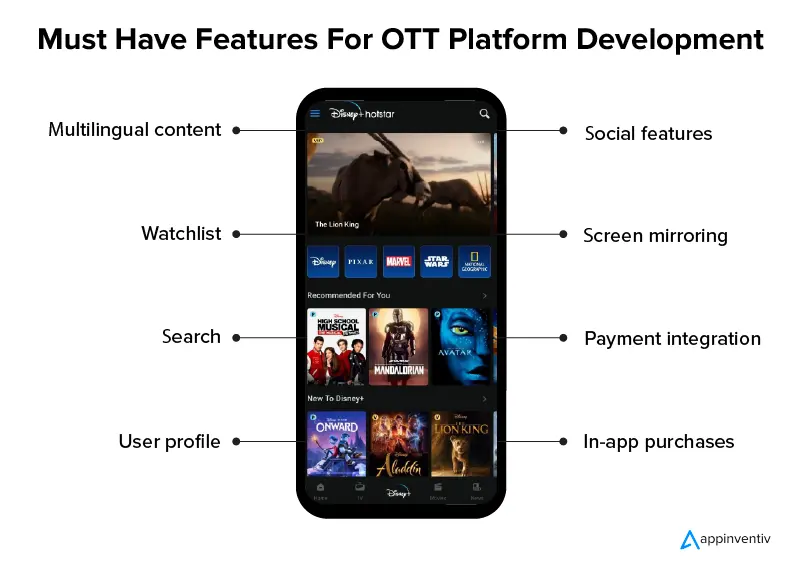
While your OTT platform development company will guide you throughout the features you require in your OTT app development, here is a comprehensive list of the must-have OTT development features to check out:
Multilingual Content
To reach a wider demographic and expand business beyond the geographical borders your core user base is housed in, it is of prime importance that you add more languages’ video content besides English.
From this one move alone, Netflix was able to bag over a million users, with an increase in 150 million+ video streaming hours.
Watchlist
The next must-have part of an OTT video streaming application would be the Watchlist functionality. This is the part where the users would add things that they wish to watch later.
One way you can get them on this part of the application is through a notification mechanism that would remind them to watch the series.
Search
An Explore or Search option is a must-have in OTT streaming platforms. The option should be designed in a way that is visible to all age groups. Also, try to have as many genre options in the search drop-down menu as possible.
User Profile
This one feature is a no-brainer. Your application must come with a user profile option which gives them the option to manage their side of the application – the content they want to watch, the preferred payment option, and suggestions based on their viewing history.
Also, if you are planning to take the Netflix route of adding more users to the application, have multiple screens in the app, with each user being given their own set of OTT platform features.
Social Features
If you ask any sound OTT app development company, they will tell you how social features are a pivotal part of the whole OTT experience. They are what makes an application shareable and helps in achieving a daily active user target.
You should give your users an option to share their viewing activity on social media with their network. Also, there should be a social media login provision to make onboarding easy. Though it would certainly increase OTT app development costs, it would be worth it, considering enhanced user experience and ease of login.
Screen Mirroring
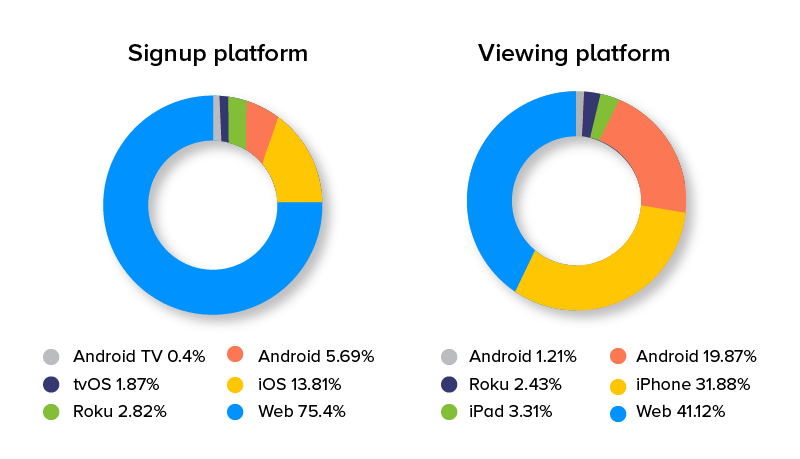
According to experts, to increase the user engagement count, it would be beneficial if your users can access the application on screens other than their mobile devices, like their TV or Desktop, etc. There are two ways to implement this feature and offer your OTT apps for mobile and TV devices:
- 1. Through Google Cast SDK
- 2. The screen mirroring option with AirPlay – an alternative to Google Cast, which works just with Apple TV and the linked iOS apps.
In-App Purchases
The last pivotal not-to-miss feature is OTT in-app purchases. Integrating payment gateways and several app money-making strategies is the most essential feature to include in your OTT app development process.
Using this feature, you will be able to give the ease and seamlessness of money transfer to your app users. You might also want to explore: How much money can you earn through an app?
The functionality becomes all the more must-have when you choose to go with the SVOD and TVOD monetization model, like how the top OTT companies like Netflix and Hulu have.
Payment Integration
Integration with a payment gateway is one of the critical factors for OTT platform development. It comprises the final step taken by the user when they decide to buy a premium plan or subscribe to your content within the OTT platform.
This has immense importance as the users may all of a sudden change their mind, right at the end of their buying decision. So, it is advisable that a Payment Gateway needs to be integrated with the OTT app.
Ditch the chaos—partner with pros to build a badass, feature-packed platform.
Monetization Strategies for OTT Apps and Platforms
You would want to know how businesses make money using app development. There are three primary monetization models for OTT apps that are followed by the top OTT companies:
1. SVOD
Subscription Video on Demand: Under this model, your users will be able to view the entire range of your video content offering in return for recurring fees that they will have to pay. Netflix is a prime example of this monetization model. Other competitors include Amazon Prime Video, Disney+, etc.
2. TVOD
Transactional Video on Demand: The monetization model asks users to pay per view. Here, your users will not have to pay anything at the time of log-in. They will be paying a sum based on the series that they wish to watch. Google Play Movies is one prominent example of this monetization model utilization. Amazon Prime Video also does the same, but only for certain titles.
3. AVOD
Ad-Supported Video on Demand: This is a majorly ad-centric digital video service that is absolutely free for the users. Under this model, the revenue from advertisements is used for offsetting production, hosting, and content monetization. Platforms like YouTube, Tubi are perfect examples of this monetization model. However, ensuring that ads do not disrupt the user experience is one crucial consideration in such a model.
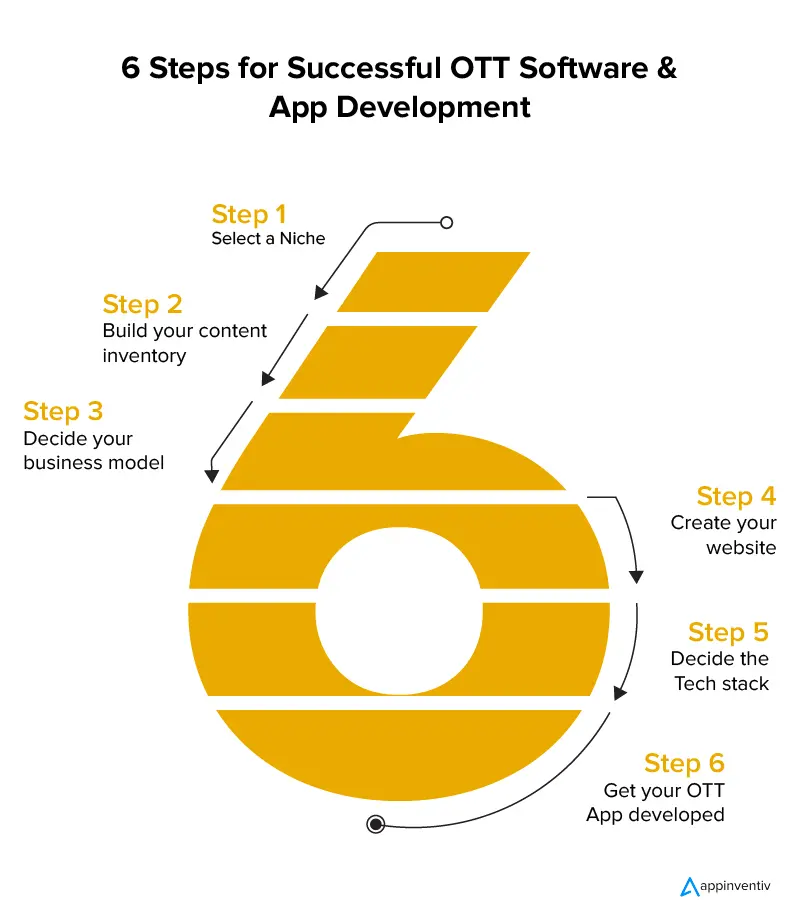
OTT Software & App Development: Successful Steps to Follow
Selecting A Niche
OTT video streaming app development is a general idea, and you should choose first what niche you will be following when entering this industry. To win a packed market space, going specialty-specific is the key. According to Expert Market Research, despite the market dominance of Amazon and Netflix, regional content is expected to capture a bigger market share by 2025. Thus, localized programming prioritization is at a high rate right now. [Source: Expert Market Research]
Developing Content Inventory
Since content is the genuine foundation of an OTT video application, you cannot overlook an inventory of content that you will stream on it after its launch. Make sure that the content must be stunning, since the heart of any OTT video app is its content. This will further add to the overall custom OTT app development cost.
Bonus Read: Impact of AI in the Media and Entertainment Industry
Choosing Your Business Model
OTT administrations utilize three types of plans of action, i.e., Advertising-based, subscription, and transactional models. Your application idea will propose which business model you should utilize. These models have their benefits and drawbacks.
Creating Your Website
At the point when you know which plan of action you will follow, it’s currently an ideal opportunity to make the first module of your OTT entertainment app development services, i.e., your website. All things considered, your website will give your users a simple experience to your users regardless of whether they can access your OTT mobile application or not.
Choosing the Right Tech Stack
There are various OTT platform development technologies and third-party tools that can be used to assemble your OTT applications, the final choice of which will depend on your accurate needs and OTT app ideas.
While various OTT platform development technologies and third-party tools can assemble your OTT applications, including robust OTT analytics to track viewer behavior, optimize content, and boost retention, your final choice will depend on your specific necessities and OTT app ideas. Remember that a poor tech stack choice (technology platform, payment integration, encryption, etc.) can lead to high maintenance costs and scalability issues, which would be a bummer to your desired user experience. Considering that a good tech stack will add to the total OTT platform development cost, it would be worth the expense.
Get Your OTT App Developed
As a business owner, you can hire freelancers to develop your OTT app or hire a dedicated company that provides OTT app development services. Hiring freelancers for such a big project where multiple variables are concerned generally becomes a permanent hassle due to the inability to go through the jungle of platform development from scratch. They have many crucial considerations during the development phase that they cannot handle. Hiring a dedicated OTT platform development company usually turns out to be a better idea due to the experience and available tech stack variety, due to which platform choice becomes easier.
Ditch the guesswork—our experts deliver a crystal-clear cost breakdown fast.
What You Need To Know While Planning Your Budget For OTT App
The estimation of OTT video app development, like Netflix or Hulu, cost comes down to several factors:
- The number of features that you are adding to the app
- The number of platforms that the app would work on
- The geographical location of your partnered mobile app development company is based on.
A rough ball-park estimate of the OTT software development cost will come down to a range between $150,000- $300,000.
OTT platform development cost in India would fall between:
- Basic to Mid-Level OTT App: $36,000 to $72,000
- Full-Scale, Feature-Rich OTT Platform (like Hotstar or Netflix-style MVP): $90,000 to $240,000
If your platform consists of hybrid features (YouTube + OTT), the cost would be approx:
- Starting Range: $145,000 to $360,000
- Enterprise-scale Range: $360,000 to $725,000
A full-fledged OTT platform development may also take 9-15 months. However, the best bet in custom OTT app development cost consideration is to begin with an MVP.
An MVP of your app, with minimal functionalities and forms, is the best way to test your app’s performance in the real market. It takes 4-5 months to build an MVP, but it builds a solid base to demonstrate the app’s value proposition. Thus, by focusing on just the core features, you can save yourself from burning the entire budget and get real feedback quickly. Core features might include:
- User Registration
- Content Library and Playback
- Browse and Search Functionality
- Simple Analytics
- Basic Admin Panel
An estimated OTT app development cost for an MVP version would be around $20,000 to $45,000, depending on the core functionality you plan to add.
How Can Appinventiv Help You in OTT Platform Development Strategy
Whether you want to build an app like Netflix, Hulu, or any niche-based streaming service, our OTT platform development experts and analysts can initially help you choose the right monetization model based on your requirements and content library dynamics. Discussing OTT app development costs can be a fruitful and insightful scenario with our team. Why? Our team can assist you in mapping out the fundamental development variables like:
- Choosing the Right Monetization Model
- Selecting a Suitable Platform Mix
- Considering High-End Scalability and Future Readiness
Our USP is handling the technical front. Our OTT app developers focus on building an efficient backend based on secure, cloud-based systems, combined with a content management system and an efficient database architecture. With us, you don’t have to worry about DRM integrations, cross-platform QA, and end-to-end security audits—we do it all. Our post-launch support will ensure your OTT platform remains competitive and aligned with changing user needs.
Our massive experience handling multiple client projects and our clients’ success stories give us a competitive edge in live project development. Talk to our experts and share your OTT vision now!
FAQs
Q. What are some challenges in OTT apps and platform development?
A. One primary challenge in OTP platform development comes in the form of streaming performance and handling peak traffic times. Delivering a smooth experience and buffer-free videos is considered a top-rated priority for OTT platforms. To avoid this, it is always suggested to consider a robust cloud infrastructure and efficient content delivery networks, combined with precise configuration and optimizations. Other challenges also include content protection and compliance regulations.
Q. What are the considerations for compliance and regulation for OTT app development?
A. This is a crucial consideration during OTT platform development. Data Privacy Compliance is the foremost requirement under GDPR and CCPA. More importantly, if the platform shows children or minors, rules such as COPPA (Children’s Online Privacy Protection Act) should be followed. Data restrictions and strict Parental Control are a must. Regionally, local content regulations may also apply, depending on particular cultural content and its regional government guidelines. Adherence to WCAG (Web Content Accessibility Guidelines) nowadays is also considered a must.
Q. What are the tips and best practices to reduce OTT app development costs?
A. Reducing OTT app development costs is a strategic amalgamation of cornered planning, good technology choices, and a well-phased-out execution. Starting with an MVP is the primary method to cut costs and check market feedback. Another key is to utilize cross-platform functionality for support on both Android and iOS. This cuts both expenses and development time. Moreover, adopting agile methodology is another way to check production expenses as it better manages resources without overhauling the entire system.
Q. How long does it take for OTT app development?
A. The OTT development timeline entirely depends on the project’s complexity, features, and the platform it supports. For the basic MVP version, it takes around 3-4 months of time and resources. However, a full-featured enterprise platform/app takes around 9-12 months, even more, depending on the complex integrations we are looking for.
Q. How much does it cost to start a streaming service?
A. Starting a streaming service can initially cost around $30,000 to $400,000, or more, depending on its complexity. An MVP version of the app can be built at a cost estimate of $30,000 – $150,000. This expense keeps on increasing with the feature integration and post-launch support addition over time.


- In just 2 mins you will get a response
- Your idea is 100% protected by our Non Disclosure Agreement.
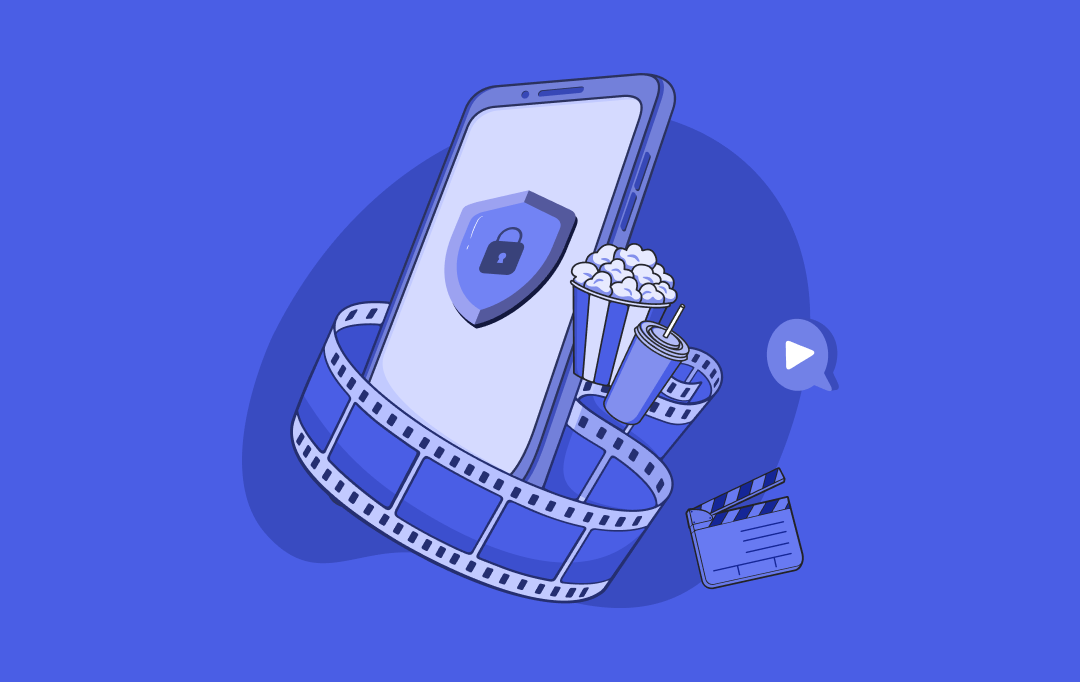
Top 10 OTT App Security Risks and How to Block Them
As the demand for on-demand content continues to surge, OTT platforms handle more than just high traffic; they manage vast amounts of user data, digital assets, and third-party integrations with significant security implications. What was once considered a niche service is now a critical infrastructure layer in the global media and entertainment landscape, making it…
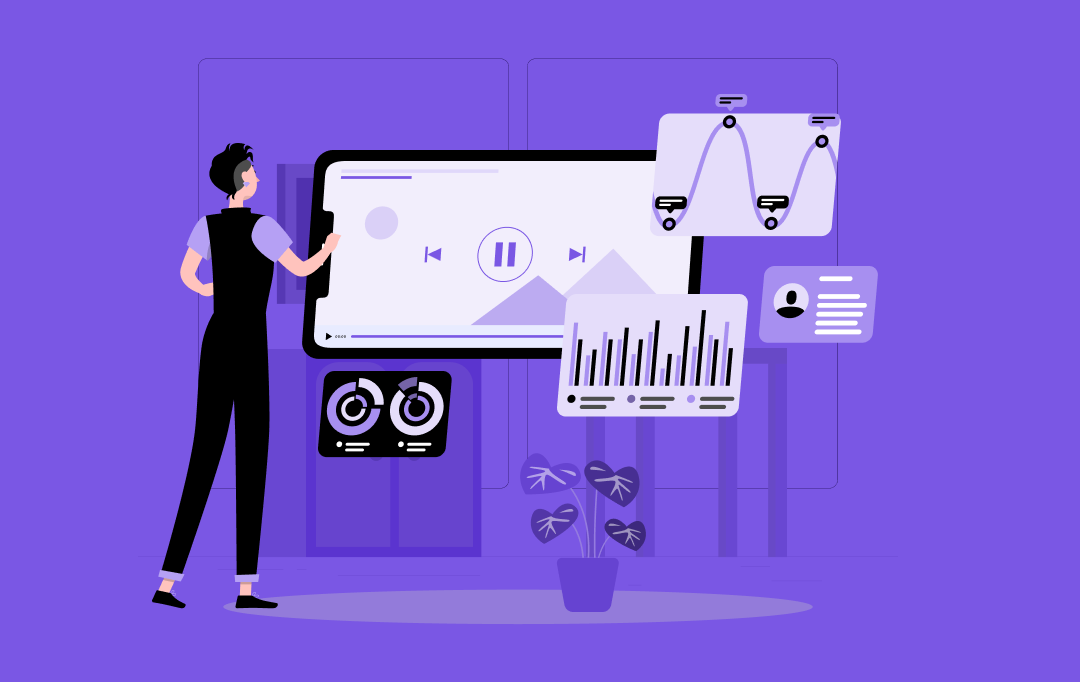
10 Reasons OTT Data Analytics is Critical for Your Business
Key takeaways: OTT analytics are crucial for understanding user behavior and optimizing content strategies. Real-time data enables businesses to make informed decisions promptly. Integrating analytics into OTT platforms can enhance user experience and drive revenue. Appinventiv develops and deploys advanced analytics solutions tailored to your unique business needs. Launching an OTT platform today is easier…
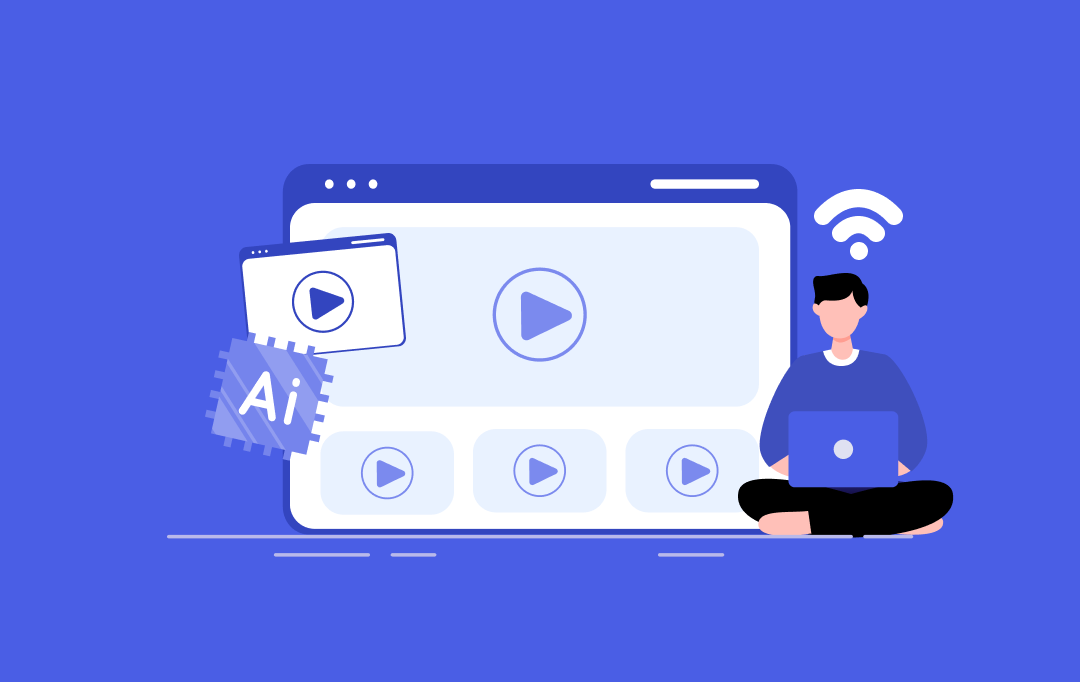
10 Powerful Ways AI is Transforming OTT Streaming Platforms
OTT streaming platforms are revolutionizing how folks watch content, and artificial intelligence in OTT platforms is a driver behind this transformation. Global OTT subscriptions are expected to reach 1.7 billion by 2027; good content is no longer enough in such a crowded space. How smartly that content is tailored and delivered to each viewer counts.…
